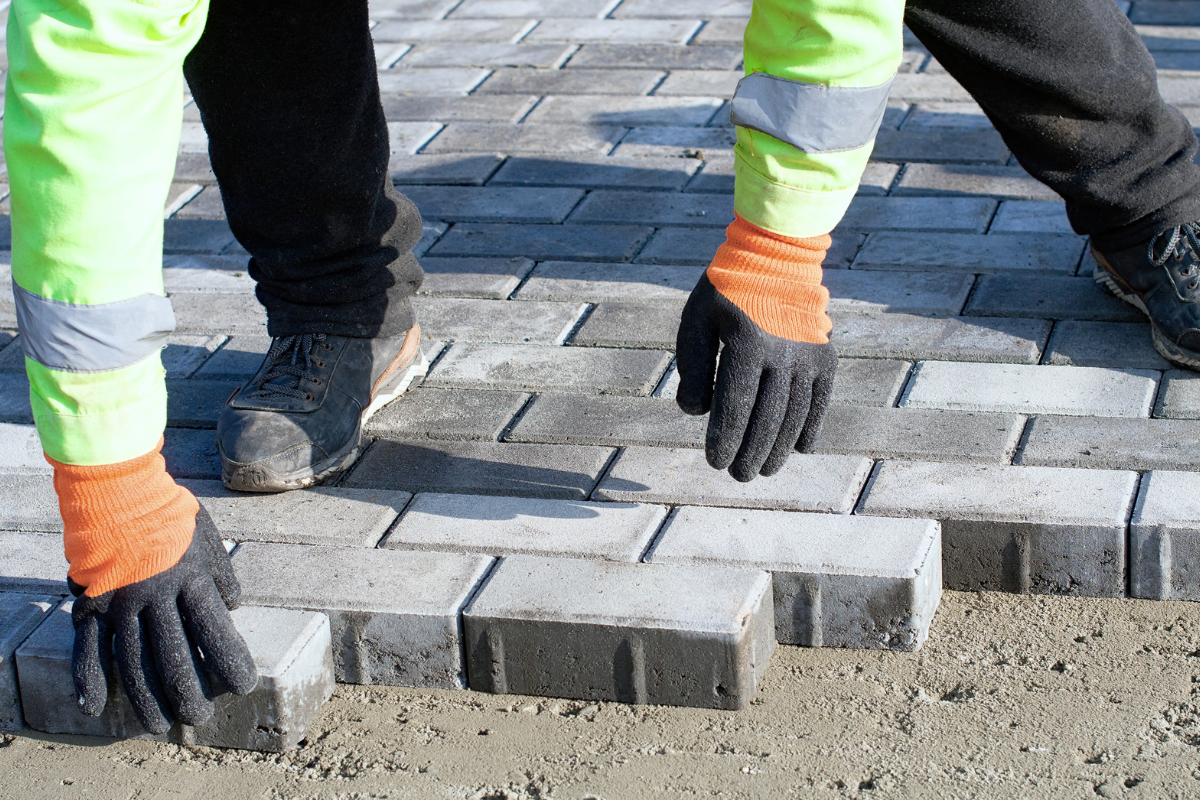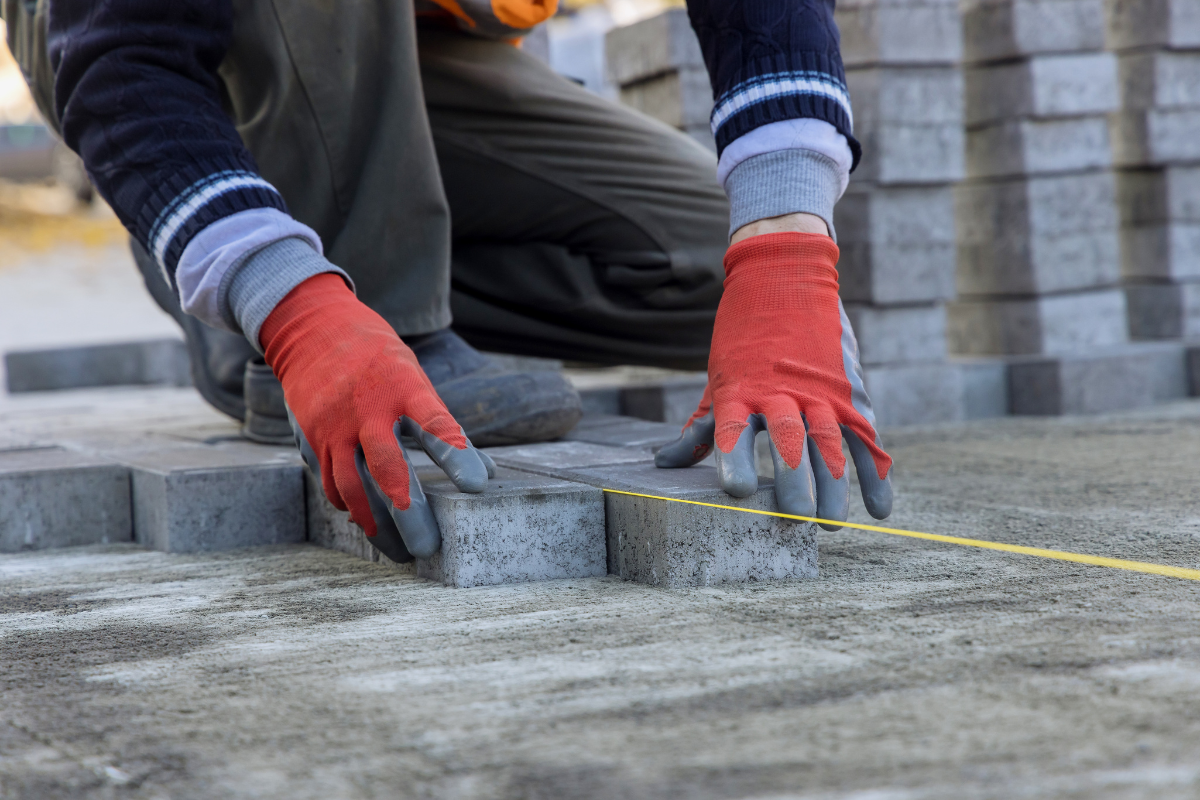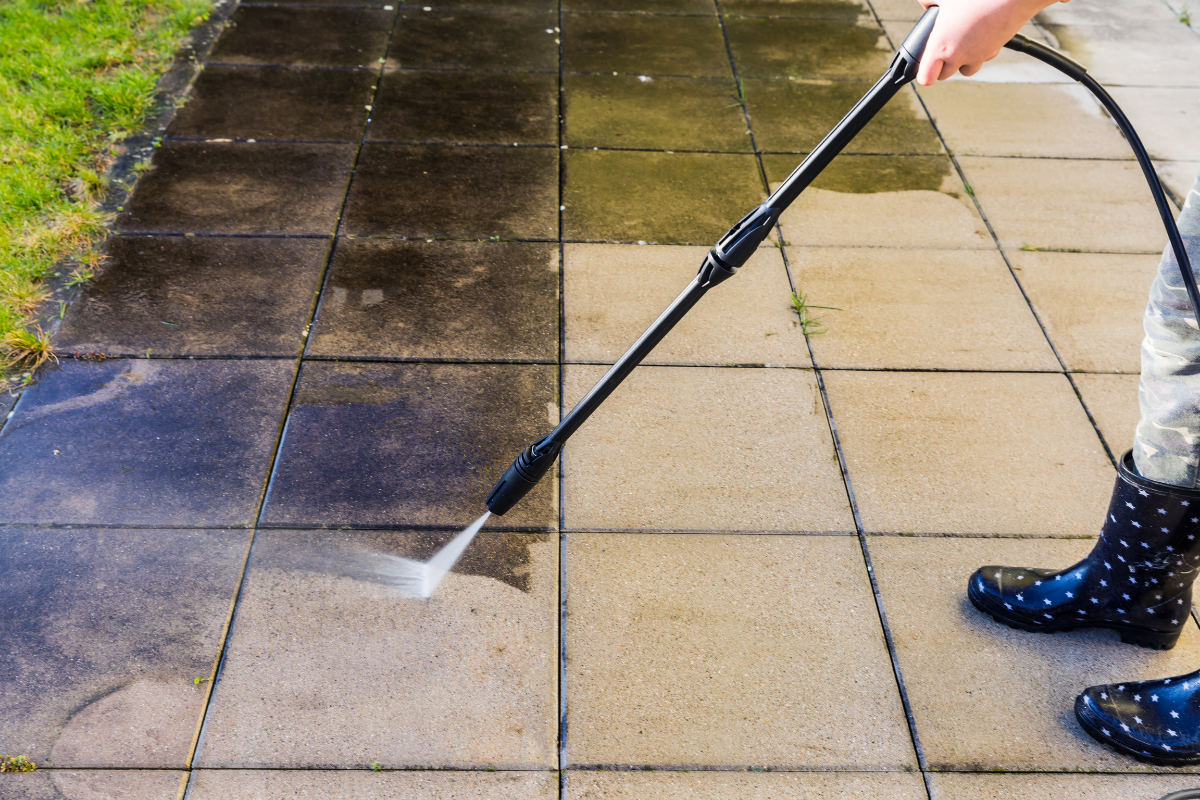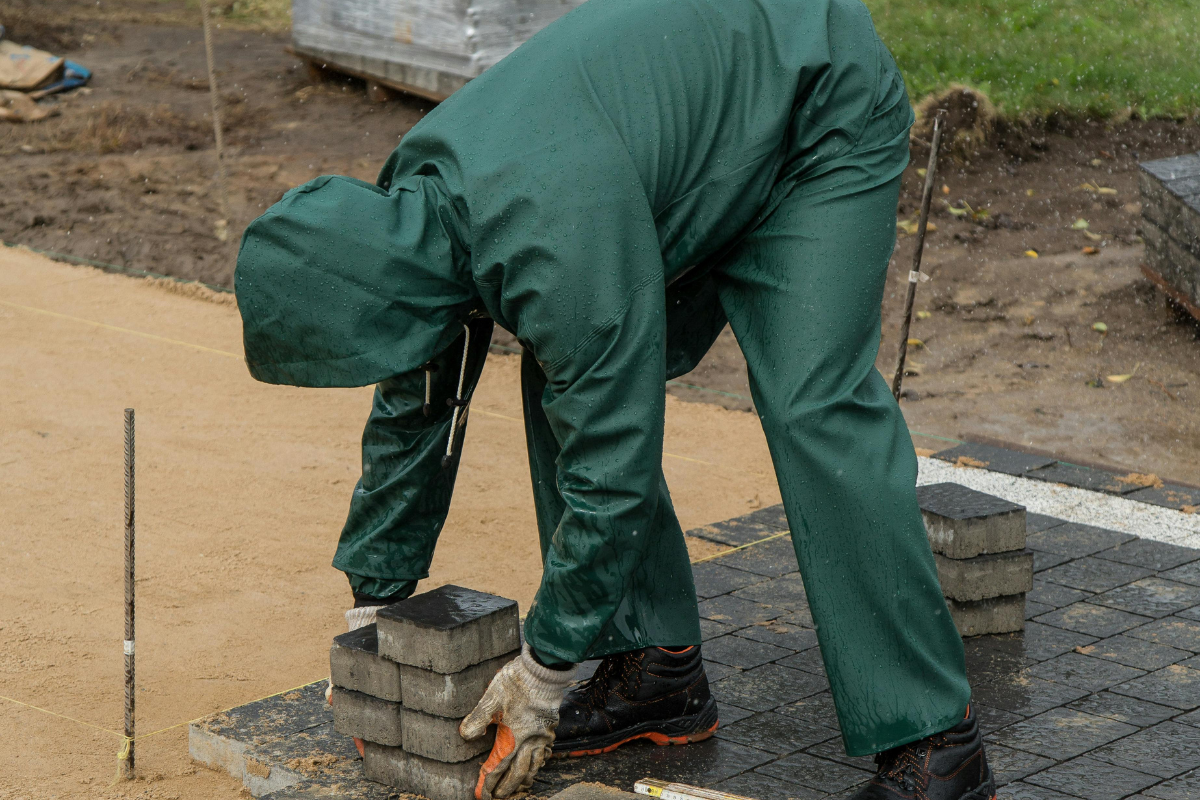
Pressure Washing Service: Maintenance Plans That Save Money



Property managers rarely budget for stains, weeds, and algae, yet those small invaders write big invoices when they’re ignored. I’ve watched sun-faded pavers crumble at the edges because the joints were never sealed, and I’ve seen “routine” driveway cleanings turn into surface restoration after a few Florida summers of neglect. A pressure washing service becomes cost-effective when you treat it like preventive maintenance, not a crisis response. Maintenance plans set schedules, control chemistry, and track surface condition over time. That’s where the savings come from.
The hidden economics of “clean”
Most of the cost in exterior surface care isn’t the wash. It’s what happens after a surface sits too long without it. Algae etches paint and oxidizes metals. Mold creeps into porous pavers. Unsealed joints lose sand, which loosens the field, invites weeds, and leads to settling and trip hazards. Then traffic, tires, and water do the rest. What would have been a two-hour rinse turns into grinding stains, treating biological growth, re-sanding, and sometimes lifting and resetting.
I’ve run service routes where a biannual plan cost a homeowner 400 to 700 dollars per year for a standard driveway, walkway, and entry. Skipping a year often added 30 to 60 percent to the next ticket because we had to use stronger chemistry, more dwell time, and sometimes specialty tips or hot water. Multiply that pattern across an HOA or a commercial plaza, and you see how maintenance plans beat one-off cleaning by a mile.
Matching frequency to materials and climate
Surface longevity depends on pairing the right frequency with the right substrate. I work a lot in humid regions where pollen, live oak debris, and marine air conspire to feed algae. If you manage property in a dry, high-elevation market, your schedule will differ, but the logic holds.
For concrete driveways and sidewalks near landscaping or shade, a quarterly or semi-annual pressure washing service keeps organics from taking hold. For pavers, especially those installed over polymeric sand, I aim for washing and sealing on an 18 to 36 month rhythm, depending on traffic and sun exposure. Clay brick breathes differently than concrete pavers, so I stretch the sealing interval if the brick is dense and well drained.
Roofs need more caution. Soft washing, not high pressure, preserves shingles and tile. In algae-prone areas, every 18 to 24 months keeps the roof from staining and helps reflect heat properly. Stucco and painted siding usually do well with a gentle wash once a year. If you see oxidation on vinyl, slow down, test a small area, and tailor chemistry so you don’t streak it.
The point is to define cadence by material, shade, irrigation overspray, and what the wind blows in. Guessing leads to rework.
Why pavers demand special attention
Pavers look forgiving because they’re modular and robust. They are also porous. Dirt and tannins from leaves settle into that porosity and bond. The joints are the weak link. When sand washes out, the field moves, rims chip, and the whole surface invites weeds. The fix isn’t just more pressure. It’s a careful sequence.
Start with proper paver cleaning. Low to moderate pressure with a surface cleaner keeps PSI even and avoids wand marks. Around edges, switch to a fan tip and keep the wand at a consistent height. For oil staining, pre-treat with a degreaser and let it dwell long enough to work but not so long that it dries. Rust marks from irrigation need a dedicated rust remover. It burns if misused, so mask grass and plants, and work in small sections.
After cleaning, wait for the pavers to dry thoroughly, often 24 to 48 hours in humid climates. Then re-sand the joints. I prefer polymeric sand for most installations because it resists washout when properly activated. Sweep it diagonally across the joints and compact with a plate compactor if the field allows. Remove all dust from the surface so it doesn’t cloud your sealer.
Now comes the part too many skip: sealing. Paver sealing is not just about sheen. It stabilizes sand, blocks UV, and makes future cleanings faster and gentler. Customers searching “paver sealing near me” usually want protection and a specific look. That’s where the finish matters.
Solvent-based paver sealer tends to deepen color and leave a richer enhancement, sometimes with a wet look. It flashes off predictably in warm, dry weather but can trap moisture if you rush. Water-based options have improved substantially and are often the safer choice for enclosed patios and for contractors sensitive to VOCs. They can be easier to apply in variable conditions and still provide strong stain resistance. For high-traffic driveways, I like a two-coat system that lays a breathable base coat and a sacrificial top coat. On pool decks, add a non-slip additive to the top coat, especially with glossy sealers.
When homeowners in Lutz ask about paver cleaning Lutz, I talk them through this whole cycle. The price difference between cleaning alone and washing and sealing is real, yet the lifetime cost almost always favors the complete sequence. Sealed pavers resist oil penetration from cars, so you treat the spot instead of fighting a stain that has migrated below the surface.
The real reason maintenance saves money
A schedule prevents over-correction. If you let algae colonize, you must either increase pressure or increase chemical strength. Higher pressure risks etching masonry and blowing out mortar and joint sand. Stronger chemistry risks plant damage, streaking, and discoloration. Both add labor. Good maintenance plans limit both.
Here’s a second lever: access and set-up. Crews that visit on a predictable cadence know your property. They arrive with the right tips, nozzles, and solution ratios already dialed in. Hoses lay faster. Sensitive plants and outlets are already mapped. Over a year, that efficiency means you pay for actual cleaning, not guesswork.
Finally, there’s asset value. I’ve seen appraisers knock down offers because the driveway looked blotchy and the entry had mildew. Buyers assume deeper neglect when surfaces look tired. It’s the same story for retail. Clean walkways lift perceived safety and care standards. You can’t quantify every advantage, but you can measure the drop in service calls once organics stop building up.
Not all pressure washing is created equal
Two house-wash quotes can look identical on paper: same square footage, similar price. The difference shows up in results and risk. I check three things.
First, equipment and technique. A professional pressure washing service will use surface cleaners on flat work to maintain even pressure, and they will soft wash delicate surfaces with a proportioner or downstream injector instead of blasting them. If the contractor can’t explain their PSI range, their nozzles, or when they switch from sodium hypochlorite to percarbonate or surfactants, you may be paying them to practice.
Second, chemistry control. Bleach is a tool, not a strategy. It works beautifully on biological growth when mixed with proper surfactants and neutralized or rinsed thoroughly. On wood or oxidized siding, I pivot to oxygenated cleaners or detergents with lower risk. A good team documents what they use so they can adjust over time. If you set up a maintenance plan, that record lets them reduce dwell times and protect plantings with confidence.
Third, protection and prep. Outlet covers, door seals, and lighting can wick water if you rush. A pro tapes and caps where needed, moves furniture, and pre-wets plantings before applying chemistry. It takes minutes and saves hours of damage control.
Tying driveway care to safety
Driveways collect rubber, oil, brake dust, and iron. A stained surface gets slick in rain. I’ve investigated more than one slip-and-fall where a glaze of algae mixed with tire residue made a ramp treacherous. Routine driveway pressure washing near me searches spike right after the first summer storm, which tells me too many people wait until they have a problem.
A maintenance plan for driveways usually includes a degreaser pre-treatment on visible spots, a surface cleaner pass at a sane PSI, and a post-rinse to carry fines off-site rather than paver maintenance plans into your planter beds. On concrete with light pitting, I step down pressure and rely more on chemistry to avoid enlarging the pits. On decorative stamped concrete, I treat it like pavers and consider a compatible sealer so the texture keeps its definition and resists staining.
How sealing pays back
Sealing isn’t always necessary, and I’ll say so if the substrate won’t benefit. For example, very dense, troweled concrete might reject many sealers or turn patchy if the prep is poor. But for pavers, exposed aggregate, and many decorative concretes, sealing makes future maintenance easier and cheaper.
The immediate wins are stain resistance, UV protection, and sand stability. The second-order benefits show up in time savings. A sealed surface releases grime faster with milder chemistry. That means faster work, less plant protection fuss, and fewer callbacks for light haze or shadowing. Over a three-year span, I’ve seen properties cut their exterior cleaning budget by 20 to 35 percent when they incorporate sealing into their cycle and stick to it.
If you shop for a paver sealer, look at solids content, breathability, and slip resistance. A high-solids acrylic may deepen color nicely but can trap moisture if your base stays damp. Penetrating sealers remain more breathable but offer less visual enhancement. There’s no single best option. Choose for your climate and how the area is used. Around pools or shaded entries, I add a traction additive, even with matte sealers, because humidity makes any surface slick.
Building a practical maintenance plan
A good plan reads like a calendar, not a contract. It calls out seasons, problem zones, and who does what. For homes, I group tasks to keep visits efficient. For example, a spring wash after pollen season knocks down film on siding, cleans windows, and resets the patio. A fall visit lifts algae before the cool months stretch dwell times and slow dry times. For pavers, I coordinate cleaning and sealing when the forecast gives you a two or three day dry window.
Budgeting is easier when you break it into predictable segments. I’ve drafted plans that spread costs quarterly: light wash in Q1 and Q3, heavy wash plus sealing in Q2 or Q4, with minor spot treatments folded in. If you manage a community, negotiate a route rate that rewards density. Crews save time when they work lot to lot.
Communication matters. If irrigation overspray keeps feeding algae on one wall, fix the sprinkler rather than paying to wash it four times a year. If oak leaves leave tannin trails across pavers, schedule a blower service before the wash so the crew spends their time cleaning, not raking.
Where homeowners save by doing a little themselves
You don’t need to outsource every step. Light upkeep between pro visits stretches the schedule and protects your surfaces. Rinse high-traffic areas during peak pollen, sweep pavers to keep grit from grinding under shoes, and blow leaves off the driveway before stains set. Be cautious with store-bought pressure washers. Most consumer units deliver enough pressure to mark wood and etch soft stone. If you use one, choose a wide fan tip, keep distance consistent, and test an inconspicuous area.
For spot stains on sealed pavers, a mild degreaser and soft brush handle most of it. Avoid wire brushes. They leave metal that rusts. If you see a white haze after sealing, call your contractor. It could be trapped moisture or over-application, and scrubbing may make it worse.
Regional notes: heat, humidity, and Lutz specifics
In places like Lutz, heat builds quickly by late morning and humidity surges by afternoon. That combination shortens chemical dwell time and lengthens dry time in the same day, which can trip up an inexperienced crew. Early starts help. Pre-wet porous surfaces to slow absorbency, then apply solution evenly so it isn’t dry by the time you reach the end of a run. Afternoon sealing often means fighting dew. I prefer a dry, breezy morning for sealer application, then a rope-and-cone perimeter so tires and pets don’t touch it while it cures.
For property owners who search paver cleaning Lutz, ask service providers how they adjust their process for the Florida sun and summer storms. A simple answer like “we just wash earlier” isn’t enough. The right answer includes dilution adjustments, surfactant selection for cling, and how they protect landscaping from splash and drift on windy days.
What to ask before you sign a plan
A few questions separate pros from pretenders and keep you from paying twice for the same job later.
- What pressure ranges and nozzles do you use on my surfaces, and when do you switch to soft washing?
- Which cleaners and ratios will you apply, and how do you protect plants and adjacent materials?
- For paver sealing, what type of paver sealer do you recommend here, how many coats, and what is the cure time before foot and vehicle traffic?
- How do you handle joint re-sanding, and what sand type do you use before sealing?
- What is your wet weather protocol and reschedule policy to protect curing and finish quality?
A contractor who answers clearly will probably perform clearly.
Common pitfalls and how to dodge them
Over-cleaning is a real problem. A bored technician with a turbo nozzle can roughen concrete, making it grab dirt faster in the future. Likewise, applying sealer over damp pavers traps moisture and leaves a milky bloom. I’ve corrected projects where the crew sealed after an overnight rain because the surface looked “dry enough.” It wasn’t. A moisture meter removes guesswork. So does patience.
Another pitfall is mismatching chemistry. Bleach on rust won’t fix it. Acid on algae won’t solve it. Use rust removers on irrigation stains, a degreaser for oil, and an algaecide for organics. If a stain is older than a season, expect ghosting even after proper cleaning. Setting expectations upfront saves friction later.
Finally, using the wrong additive in or under a sealer can cloud the finish or change slip resistance unpredictably. Always review the sealer manufacturer’s system components and stick to them. Cutting corners on a few dollars of additive can cost a re-strip and recoat.
Pricing that makes sense over time
If you’ve never priced a maintenance plan, think in ranges. A typical single-family driveway and front walk might run 150 to 300 dollars per cleaning in many markets, more for large or heavily stained surfaces. Add pavers and sealing, and you could see 600 to 1,500 dollars based on area, prep, and sealer choice. Annualized over two to three years with regular washing, that cost often beats waiting three years and paying a premium for a deep recovery plus stain treatment and potential repairs.
Commercial clients should push for volume efficiency. Sidewalks, entries, and dumpster pads cleaned on a set cadence reduce emergency calls after spills. Document the schedule and post it in your ops log. When staff knows the next wash date, they report issues earlier, while they are cheap to fix.
Choosing partners the smart way
Search terms like pressure washing, pressure washing service, and driveway pressure washing near me pull up a mix of companies, from one-truck owner-operators to multi-crew outfits. You don’t need the biggest company. You need consistency, documentation, and the right fit for your surfaces.
Ask for before-and-after photos from similar properties, ideally taken months apart so you can see how the surface ages between visits. Confirm insurance, of course, but go further: request a sample service report. A good crew leaves notes on dwell times, chemistry, any fragile areas, and what to watch before the next visit. That documentation is the backbone of a maintenance plan that actually saves money.
When the topic turns to paver sealing, request the data sheets for the specific sealer. If the contractor recommends a product, they should know flash times, recoat windows, and cure times for both foot and vehicle traffic. The phrase washing and sealing should mean a sequence matched to your site, not a single line item.
What a year can look like when you get it right
I manage a small coastal plaza that used to call us only when the entry turned black. The first year, we cleaned monthly for a quarter to break the cycle, then moved to every eight weeks. We sealed the pavers in front of the coffee shop after a deep clean, and the oil spots stopped ghosting through. We added a gentle roof wash service at 18 months and scheduled gutter cleaning immediately after leaf drop. The plaza cut its annual exterior cleaning costs by roughly a third compared to the previous two years. More importantly, they stopped paying emergency rates. Staff now sends a photo when they see a spill, and we spot treat during regular rounds.
At a residence in a shaded cul-de-sac, we mapped irrigation overspray and adjusted heads so the driveway edge stopped staying damp all day. After one thorough wash and a careful two-coat sealer, the homeowners moved to a twice-a-year light wash. Their yearly spend dropped, their pavers stopped rocking at the edges, and their entry stayed bright through summer.
That’s the promise of a maintenance plan. Less drama, lower total cost, better curb appeal.
A final word on doing the right thing at the right time
Cleaning is simple when you have time on your side. It gets hard when you wait. Maintenance plans give you that breathing room. Whether you’re typing paver sealing near me to find a specialist or comparing bids for building facade cleaning driveway pressure washing near me, focus on cadence, technique, and materials. Treat sealing as part of the system, not an upsell. Keep notes on what works and what doesn’t. Small, steady steps beat big, expensive rescues.
The surfaces around your home or business are constantly negotiating with sun, water, and traffic. Give them a schedule that respects that reality. The savings will show up in your invoices, but also in the way your place feels when you walk up to it on a bright morning and everything looks cared for.
Bulletproof Pavers
Address: 1523 Green Meadow Dr, Lutz, FL 33549
Phone: (813) 401-0693